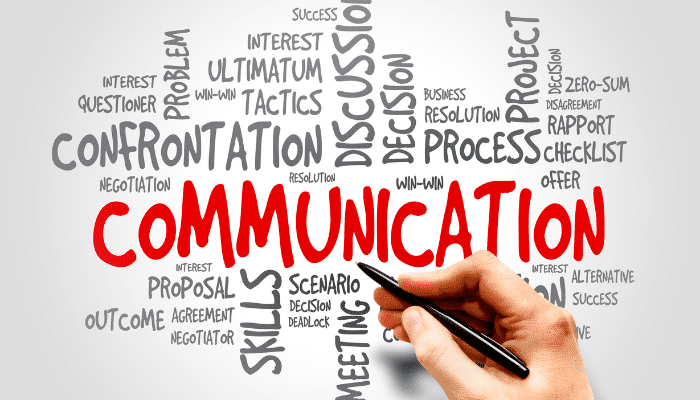The reasoning, arguments, and tools you use to decide which things to focus on and complete first are known as prioritization skills. Prioritizing one assignment could entail devoting more time and energy to others, even if you finish and deliver them all at once. When obligations seem limitless and time is scarce, skill prioritization becomes crucial. It enables the most efficient and effective utilization of your time, freeing both you and your team from less critical tasks that can be deferred.
Mastering prioritization allows you to bring order to chaos, significantly reduce stress, and navigate toward successful outcomes. However, this is easier said than done.
According to a report by Reclaim, a staggering 98.2% of people struggle with prioritizing tasks effectively. This proficiency is particularly crucial when managing reprioritized work, as failing to apply prioritization skills may lead to being overwhelmed by conflicting requests, resulting in lower productivity and stress.
When deciding what tasks to focus on and guiding your team, you must consider the importance, time needed, scope, and order of tasks.
Factors That Influence Task Priority
Choosing which tasks to prioritize involves considering some criteria. Let us expand on these factors for a better understanding:
-
Urgency
Although it may seem apparent, the urgency with which tasks must be finished significantly impacts their priority. Tasks based on time-sensitive variables or those with specific deadlines usually rank higher on the priority list.
-
Impact
The priority assigned to a task is profoundly shaped by the potential advantages or drawbacks associated with completing or postponing it. Tasks garnering high priority are those capable of delivering substantial benefits or preventing significant issues.
-
Dependencies
The execution of certain tasks is contingent upon the completion of others, indicating interdependence among them. Consequently, prioritizing immediate tasks that serve as prerequisites for future ones can effectively mitigate potential workflow bottlenecks.
-
Needs of Clients or Stakeholders
Activities that directly affect clients, consumers, or stakeholders may be given priority since satisfying their requirements and standards is essential to preserving goodwill and client satisfaction.
-
Level of Effort
It is wise to focus on tasks that carry equivalent business impact but require less effort. Allocating more time and resources to tasks demanding greater effort but offering relatively less significance to the company may not be the most efficient use of resources.
Why are Prioritization Skills Important?

-
Resource Optimization
Resources such as money, employees, time, and equipment are limited. Therefore, resource optimization is a smart option. It could entail delegating tasks to employees according to their skill sets or giving them the required tools or training.
Prioritizing skills for productivity thus involves assigning resources to people and projects with the highest return on investment.
-
Time Management
Prioritizing skills is highly important for surviving and thriving in a competitive workspace. They are required to meet deadlines and complete time-sensitive tasks. A good time manager keeps the team from burning out by not attempting to do everything simultaneously.
-
Stress Reduction
The sensation of overwhelm and uncertainty often arises when numerous tasks compete for your attention. In such moments, the potency of prioritization emerges as a valuable ally, alleviating some of the mental burden. Effective prioritization not only serves as a stress-relieving tool but also provides a structured pathway to address tasks coherently.
-
Quality Control
Efficiently prioritizing tasks helps team members dedicate sufficient time and attention to projects. This results in greater quality outcomes. Rushing through jobs can lead to errors and poor quality.
-
Professional Growth
Employees with good prioritization skills get more challenging tasks and rewards for performing well under pressure. Thus, they benefit from more opportunities and assignments. They have more chances for professional growth. This practice will motivate other employees to learn this essential skill and fulfill their tasks on time.
Also Read: 10 Professional Development Goals for Managers in 2024
-
Long-Term Planning
It’s important to note that not all tasks require short-term prioritization. Organizations can sustain their competitive edge and adapt to changing market dynamics by assessing long-term goals and distributing resources accordingly. Strategic planning and prioritization skills can help with long-term planning.
-
Adaptability
In the dynamic landscape of fast-paced firms, adaptability is paramount as the workplace continually presents new challenges. Those equipped with prioritization skills can adeptly navigate these challenges, seamlessly integrating them into their existing workload without losing focus.
Useful Skills Prioritization Frameworks
Here are some tried and tested frameworks that you can use in your workplace to help employees prioritize tasks:
The MoSCoW Method
It stands for “Must Have, Should Have, Could Have, and Won’t Have.” This strategy is mainly used for project management. This framework’s various priority levels are:
- Must Have: The activities in the Must Have category are essential to the project’s success. These must be finished before touching on other tasks.
- Should Have: Items significant but unnecessary for the project’s success fall under the “Should Have” category. These tasks can be postponed if needed without compromising the project’s success.
- Could Have: Tasks that are essential but not urgent are considered could-haves. “Could Have” duties include planning for upcoming projects or training for professional growth.
- Won’t Have: Tasks that are not necessary and can be put off or removed completely fall under the “Won’t Have” category.
Eisenhower Matrix or Urgent-Important Matrix
This concept divides jobs into four quadrants according to their priority and urgency:
- Important and Urgent: Start working on these chores right away.
- Not Urgent But Important: Put off some chores until later to avoid them becoming urgent.
- Urgent But Not Important: Assign or find ways to reduce the time spent on these assignments.
- Not Important and Not Urgent: Consider skipping or putting off these duties.
The Kano Model
A prioritization framework called the Kano Model assists team managers in ranking product features according to how they affect customer satisfaction. The model divides features into performers, delighters, and must-haves.
- Must-Haves: Features that consumers demand from a product or service are known as must-haves. These are the basics that a product or a service is expected to have.
- Performers: Performance features improve customer happiness and the overall customer experience when implemented correctly. However, these features may not be necessary.
- Delighters: These are unanticipated features that excite and delight clients while setting your product apart from rivals.
Based on how each feature affects customer happiness, managers can first prioritize which items to work on using the Kano model. Managers can then decide where to allocate their efforts for the greatest impact by examining customer input and determining which features fit into each category.
RICE Ratings
It is one of the most popular and successful systems for task prioritization. The process involves evaluating tasks based on effort, confidence, impact, and reach.
-
Reach
This first aspect of RICE scoring describes how many users or people are impacted by doing a specific task. By analyzing its scope, managers can assess a task’s capacity to influence the organization’s objectives positively. High-reach tasks often have a greater impact on performance. They are prioritized over tasks with lower reach scores.
-
Impact
The possible advantages of a task for the company or project are called impact in this context. Considering immediate and long-term consequences when utilizing RICE scoring is imperative. Prioritizing tasks with higher impact scores over those with lower scores is advised.
-
Confidence
Since confidence evaluates the degree of ambiguity surrounding the possible impact of a project, it is an important part of the RICE rating system. A high confidence score denotes a high degree of certainty in the project’s ability to produce the intended results. Prioritizing such projects with a high confidence score is wise. Managers can make data-driven decisions and efficiently allocate resources by including confidence in the RICE score process.
-
Effort
The labor, time, and materials needed to finish a job or project are all considered forms of effort. Projects with lower effort scores may occasionally be prioritized because they can be finished quickly and effectively.
ICE Rating Method
The ICE scoring model is one of the most often used frameworks for prioritization among managers. This methodology assists in task prioritization according to ease, impact, and confidence. Applying the ICE model in a group context is simple. It finds time-efficient, high-impact, low-effort jobs that balance long-term and short-term objectives.
A task’s impact, confidence, and ease scores are multiplied to get the ICE score. With this approach, managers can ensure that resources are used effectively while concentrating on the most important tasks that improve team performance.
Summing Up
Prioritization stands as a critical practice for numerous reasons, encompassing resource optimization, time management, stress reduction, and quality control. The art of prioritization entails the judicious selection of tasks, considering factors such as urgency, importance, impact, stakeholder needs, effort, and strategic alignment.
A plethora of effective prioritization frameworks are available to managers, serving as valuable tools to ensure tasks align seamlessly with goals and resources, thereby fostering successful outcomes.
Experience the power of effective performance management with Engagedly! Discover how our platform might help your organization streamline goal setting, feedback, development, and more. Request a demo today.
Frequently Asked Questions
-
How do you demonstrate prioritization skills for employees?
Demonstrating prioritization skills for employees involves setting clear expectations, establishing task priorities, providing guidance on time management, offering resources and tools for task organization, and leading by example through effective prioritization in your own workload.
-
What is the purpose of prioritization?
Spending time on the vital tasks that will matter in the long term and directing your efforts toward goal achievement is the purpose of prioritization. When you prioritize effectively, you’ll feel less reactive and more focused and intentional.
-
How can the ability to prioritize help with resource optimization?
Allocating scarce resources, such as time, money, personnel, and equipment, to assignments that provide the most value or return on investment helps with prioritization skills. It results in increased efficiency and productivity.




















 Lack of Faith in the Company
Lack of Faith in the Company
 Cultivating a learning culture is indispensable for sustained business excellence, as it profoundly influences various facets of an organization, from strategy and creativity to employee engagement and retention. The significance of a learning culture in the workplace is multifaceted, and here’s why:
Cultivating a learning culture is indispensable for sustained business excellence, as it profoundly influences various facets of an organization, from strategy and creativity to employee engagement and retention. The significance of a learning culture in the workplace is multifaceted, and here’s why:
 Burnout is a term used to describe a state of chronic stress and exhaustion that can result from prolonged exposure to demanding or overwhelming work conditions. It’s often characterized by feelings of emotional and physical depletion, a
Burnout is a term used to describe a state of chronic stress and exhaustion that can result from prolonged exposure to demanding or overwhelming work conditions. It’s often characterized by feelings of emotional and physical depletion, a 
 Pulse surveys offer a powerful way to engage employees, improve morale, and drive organizational success. This section delves into the key importance of pulse surveys, demonstrating how they can transform the
Pulse surveys offer a powerful way to engage employees, improve morale, and drive organizational success. This section delves into the key importance of pulse surveys, demonstrating how they can transform the 
 A survey by Gallup found that
A survey by Gallup found that 
 Crisis management training is important because professionals’ ability to effectively handle business-related crises can have a significant impact on long-term organizational success. The overall goal of this training is for an organization to provide tools, knowledge, and practical skills to employees who are not experts in crisis management so that they can effectively manage crises if they occur. There are various approaches to crisis management training, which vary depending on organizational needs,
Crisis management training is important because professionals’ ability to effectively handle business-related crises can have a significant impact on long-term organizational success. The overall goal of this training is for an organization to provide tools, knowledge, and practical skills to employees who are not experts in crisis management so that they can effectively manage crises if they occur. There are various approaches to crisis management training, which vary depending on organizational needs,  A leader is expected to play various roles depending on the stage of a crisis. For example, in the early stages of a crisis, when its nature is ambiguous, you will be expected to be a problem solver and propose various solutions. Later on, when the facts and figures become clearer, you will be expected to shift gears and make difficult decisions.
A leader is expected to play various roles depending on the stage of a crisis. For example, in the early stages of a crisis, when its nature is ambiguous, you will be expected to be a problem solver and propose various solutions. Later on, when the facts and figures become clearer, you will be expected to shift gears and make difficult decisions.



























